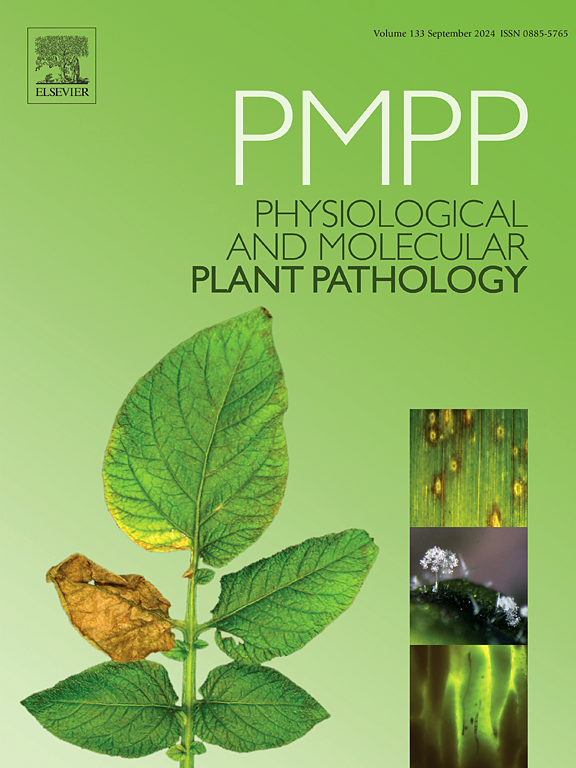Rapid detection of Pratylenchus coffeae using recombinase polymerase amplification assay with lateral flow dipsticks
IF 2.8
3区 农林科学
Q2 PLANT SCIENCES
引用次数: 0
Abstract
Pratylenchus coffeae is a migratory endoparasitic nematode that causes root rot in a wide range of crops, resulting in enormous financial losses each year. The rapid and accurate detection of P. coffeae is crucial for controlling and combating the disease of root rot. We designed species-specific primers and probes based on the parasite's rDNA-ITS sequence and developed a rapid P. coffeae detection method employing a recombinase polymerase amplification (RPA) assay. The RPA reaction can be completed in 5–30 min at 38 °C without the application of a thermal cycling instrument and has an optimal time of 25 min. The amplification results can be directly observed on the test strip in 3–5 min. We validated the RPA assay and showed that it accurately detects P. coffeae in infested host tissues and soil samples, including nematodes from complex and diverse geographic populations. The RPA-lateral flow dipstick(RPA-LFD)assay has a detection limit of 0.01 ng/μL pure gDNA, making it 100 times more sensitive than traditional polymerase chain reaction assays. The results indicate that the RPA assay is a sensitive, rapid, practical, and visual method for the rapid detection and diagnosis of P. coffeae from infested fields and the RPA-LFD assay is accessible for point-of-service or lab-in-a-suitcase diagnosis.
求助全文
约1分钟内获得全文
求助全文
来源期刊
CiteScore
4.30
自引率
7.40%
发文量
130
审稿时长
38 days
期刊介绍:
Physiological and Molecular Plant Pathology provides an International forum for original research papers, reviews, and commentaries on all aspects of the molecular biology, biochemistry, physiology, histology and cytology, genetics and evolution of plant-microbe interactions.
Papers on all kinds of infective pathogen, including viruses, prokaryotes, fungi, and nematodes, as well as mutualistic organisms such as Rhizobium and mycorrhyzal fungi, are acceptable as long as they have a bearing on the interaction between pathogen and plant.

 求助内容:
求助内容: 应助结果提醒方式:
应助结果提醒方式:


